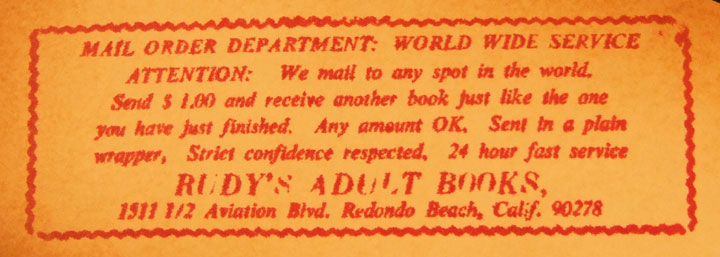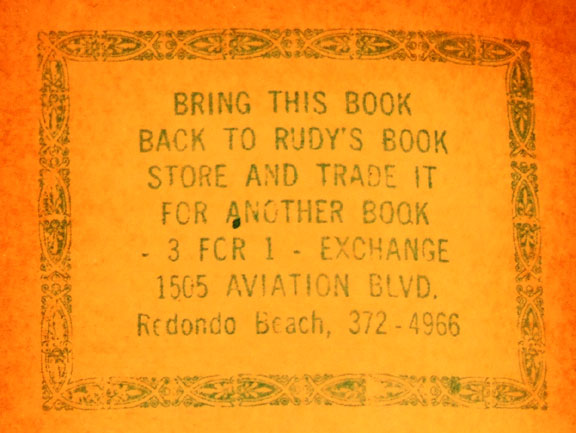For some twisted, masochistic reason–unknown to even ourselves–Alice and I decided to get our apartment in order and enter the Apartment Therapy “Small Cool 2008” contest.
Entry requires you push to all of your crap out of the way and prepare 5 photos (plus an essay) showing off how you’ve creatively utilized a limited space. Then you submit your home to the votes–and snarky comments–of a thousand Pottery Barn Fascists who want everything painted white and own NOTHING.
Before you get your chance to run this bourgeoisie gauntlet though, you have to make it past the regional editor…which we didn’t (though plenty of–and I’m being totally objective here–dull and ugly apartments did).
So for the edification of anyone whose last name happens to be Smith or Stevenson, here’s a quick tour of our apartment (aka: the Hang Fire Books Fortress of Solitude).
First the foyer where I store most of my inventory.

Regular readers of this blog will remember the exciting erection of the built-in bookcase saga from back in January. Skillfully cropped from those photos was the groaning and hideous aluminum shelving carried over from my old office. Thanks to some Ikea curtain sliders and sharp, Alice-selected fabric panels, those shelves are hidden now and my stock is protected from sunning and dust.
Here’s the living room.
 The cool coffee table is one-of-a-kind from the estate of a cabinet maker whose house was filled with beautiful built-ins (that we should have taken if only to store them until they fit somewhere). The art is from a folio-sized catalog of antique textiles. The one on the right has all of these curious severed feet worked into the pattern. We busted that doorway through to the kitchen ourselves…very therapeutic.
The cool coffee table is one-of-a-kind from the estate of a cabinet maker whose house was filled with beautiful built-ins (that we should have taken if only to store them until they fit somewhere). The art is from a folio-sized catalog of antique textiles. The one on the right has all of these curious severed feet worked into the pattern. We busted that doorway through to the kitchen ourselves…very therapeutic.
Here’s the kitchen/dining room.
 The hybrid aluminum + wooden table is from Craigslist, the china cabinet is from the street, Alice reupholstered the wooden school chairs, and the scrollwork thingy over the right-hand window is an architectural detail from another estate. My packing station is under the cutting board. When I ship books, I take off the board + skirt and get to work.
The hybrid aluminum + wooden table is from Craigslist, the china cabinet is from the street, Alice reupholstered the wooden school chairs, and the scrollwork thingy over the right-hand window is an architectural detail from another estate. My packing station is under the cutting board. When I ship books, I take off the board + skirt and get to work.
Here’s the living room from my office side.

I found this vintage wooden cubicle divider at the Housing Works thrift shop but it was over priced. It ended up on their auction page a few weeks later and I got it for the opening bid of $150. It took 1/2 a bottle of Murphy’s oil soap to clean the nicotine and depressing work lunches from it. The smoked glass window is nice and my monitor glows through it in a very soothing way. The creepy outsider art–visible over the top–was salvaged from this crazy crap shack. A recent addition is this red enamel clock from the 40s-50s.
Lastly the boo dwa.

The pirate trunk is a family heirloom, the dresser was a craigslist find (that I snatched up for $100 before like 1000 furniture dealers found it), the art is a vintage travel poster from Zermat Switzerland (that used to serve as my air conditioner before I could afford one), and a limited edition Eric Drooker poster from Blackout Books–an anarchist bookshop where Alice used to work.
That’s it for now. I just purchased a huge sign from an old tattoo parlor and some vintage Mexican wrestling movie posters. I’ll take a picture of that wall when I get everything framed and mounted.












